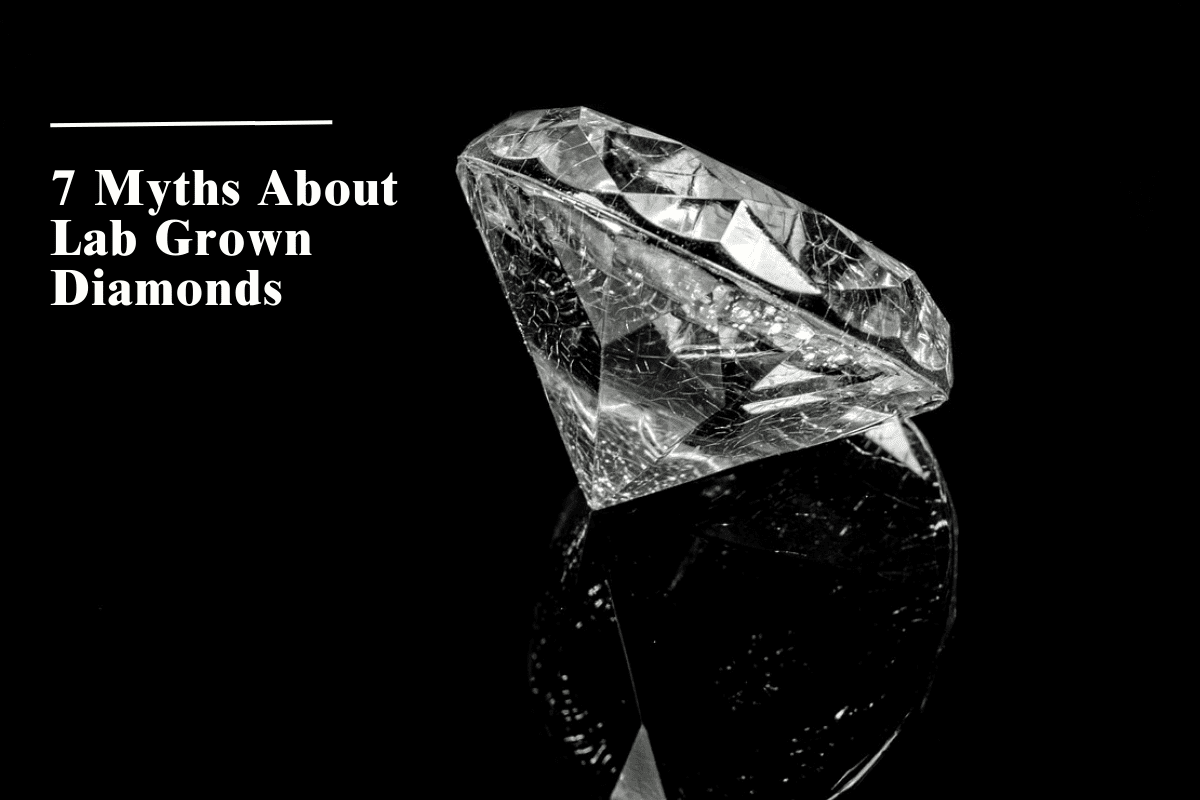Lab-Grown Diamonds: Debunking 7 Common Myths (What Buyers Need to Know)
Lab-grown diamonds shook up the jewelry world as a modern alternative to mined diamonds. While they are gaining popularity, confusion and myths about these stones persist. Are they "fake"? Do they last as long as natural diamonds? Are they really ethical?
Let's debunk seven of the most common misconceptions surrounding lab-grown diamonds so that you can better make informed choices, whether shopping for an engagement ring or just curious about this innovative gem.
Lab-Grown Diamonds Are Fakes
Myth: Many think that lab-grown diamonds are some kind of fake stone, such as cubic zirconia or moissanite.
Reality: Lab-grown diamonds are chemically, physically, and optically the same as natural diamonds. They both consist entirely of pure carbon in a crystalline structure. Professional gemologists even require specific tools to be able to distinguish them.
The only difference is in their origin: natural diamonds form deep in the earth over billions of years, while lab-grown diamonds take weeks to create through advanced technology (HPHT or CVD).In 2018, the FTC stated, "A diamond is a diamond, regardless of whether it is mined or produced in a laboratory."
False Hurdle 2: "They're Not as Tough as Natural Diamonds"
Myth: Detractors claim lab-grown diamonds aren't as hard or less resistant to scratching.
Reality: Lab-grown diamonds have the same exceptional hardness as natural diamonds, scoring a perfect 10 on the Mohs scale. They are equally resistant to scratches, chips, and everyday wear. Whether mined or lab-made, a diamond's durability depends on its cut and care, not its origin.
Misconception 3: "All Lab-Grown Diamonds Are Flawless"
Myth: Since they're made in labs, people assume every lab-grown diamond is perfect.
Reality: Like natural diamonds, lab-grown stones differ in quality. They can contain inclusions (internal imperfections), blemishes, or color tints based on the growth process. Grading organizations like the GIA and IGI grade them according to the same "4Cs" criteria (Cut, Color, Clarity, Carat). Though labs can make more consistent high-quality diamonds, perfection is not assured—and flawless stones still carry a premium price tag.
Misconception 4: "They're 100% Ethical and Sustainable"
Myth: Lab-grown diamonds are often sold as guilt-free, with no environmental or ethical downsides.
Reality: While they're generally more sustainable than mined diamonds, they're not without impact. Lab-grown diamonds require significant energy to produce, especially in regions reliant on fossil fuels. For instance, a 2023 study by Diamond Foundry noted that using renewable energy can reduce their carbon footprint by up to 90%.
Ethically, they avoid issues such as conflict mining and poor labor practices, but transparency matters. Always research brands to ensure that materials are ethically sourced, such as conflict-free graphite, and that fair labor conditions prevail.
Misconception 5: "Lab-Grown Diamonds Have No Resale Value"
Myth: Critics say that lab-grown diamonds are worthless after purchase.
Reality: While it's true that they depreciate much faster than natural diamonds, that does not mean valueless. The resale market is still emerging, with platforms like Louped and WP Diamonds now accepting lab-grown stones. However, expect to recover 20–40% of the original price, compared to 50–70% for natural diamonds.
Think of lab-grown diamonds like consumer electronics: they lose value as technology improves and supply increases. Buy them for their beauty and ethics—not as an investment.
Misconception 6: "They're Not Certified or Graded"
Myth: Some believe lab-grown diamonds lack professional certification.
Reality: Reputable labs such as Gemological Institute of America (GIA), International Gemological Institute (IGI), and HRD Antwerp grade lab-grown diamonds just as stringently as natural diamonds. Certificates detail their 4Cs, origin, and any treatments. Insist on a certificate when buying-it's your proof of quality and authenticity.
Myth 7: "They're Just a Passing Trend"
Myth: Naysayers write off lab-grown diamonds as a fleeting fad.
Reality: Lab-grown diamonds are here to stay. They have been around since the 1950s (used originally for industrial purposes) but started to gain steam in jewelry in the last decade of the previous century. The market has expanded exponentially and Mordor Intelligence expects an annual growth rate of 7.5 per cent through 2029. Major retailers such as Brilliant Earth and James Allen even feature them quite prominently these days, and millennials/Gen Z consider them a symbol of innovation and sustainability .
Lab-grown diamonds are the real deal-a legitimate, sustainable, and gorgeous option for jewelry-but they do come with a few caveats. By breaking down these myths, we can enjoy them for what they truly are: a 21st-century wonder that democratizes luxury while reducing harm to the environment.
Before You Buy:
Pick certified stones from reputable sellers. Leranath Diamond is best choice you can make and we sure that you never regret this.Consider your priorities (ethics, budget, resale value).Pair them with recycled metals for a truly eco-friendly piece.
Have More Questions?
Scroll down to our FAQ below or leave a comment! Let's get a conversation started about the future of diamonds.
FAQ:
Q: Can insurers appraise lab-grown diamonds?A: Yes, provided the insurer accepts the market value.
Q: Do lab-grown diamonds yellow over time?A: No—the ones that are as good as 'good' natural diamonds are that stable.
Q: Are they cheap because they're inferiorly made?A: No—prices reflect production efficiency, not inferiority.

